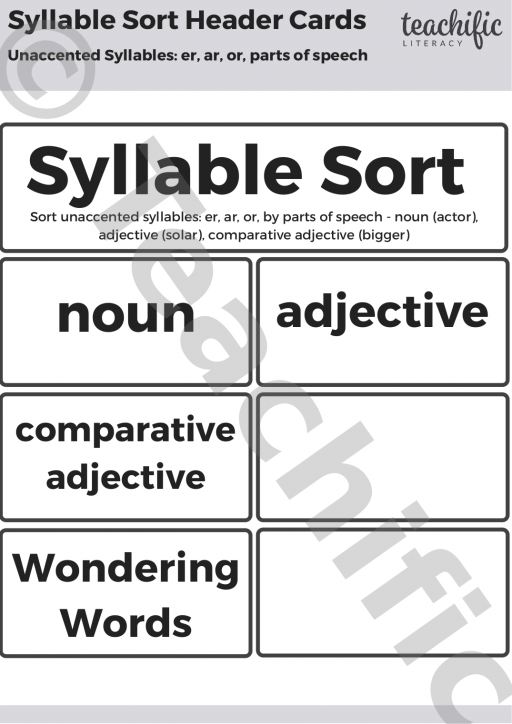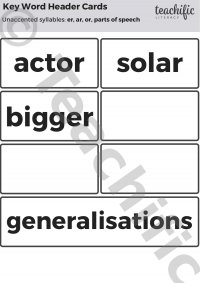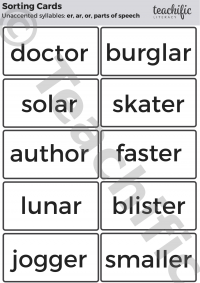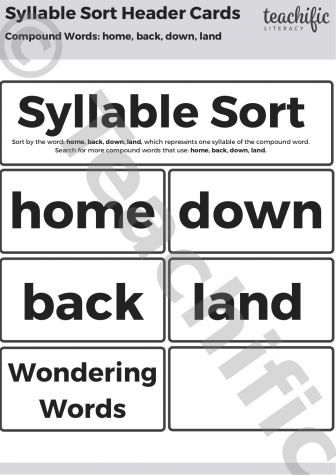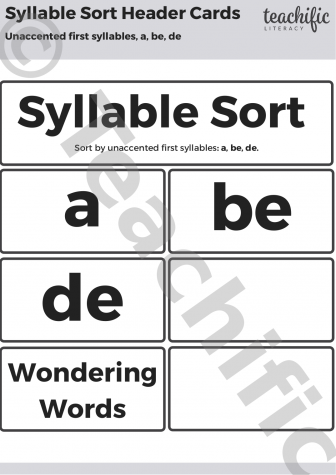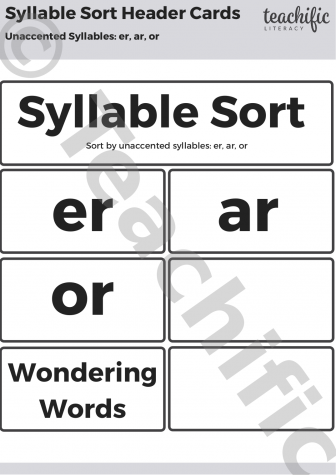About this teaching resource
It’s not only the inside of words that can confuse writers! If your writers have got spelling patterns under control, and are spelling huge banks of words correctly, then affix and syllable sorts enable writers to explore the ways in which syllables, prefixes and suffixes impact on the spelling and meaning of words.
This is where word study gets interesting: the impact of open and closed syllables, what happens to base words when adding prefixes and suffixes, interesting discoveries to be made around compound words, how roots behave differently than base words!
How to:
- Choose from a range of syllable sorts: Look at the needs of your students to choose the sort that will most support them as writers.
- Introduce students to the syllable sort: Use key words as examples
- Sort and talk about the word cards
- Look down each list of words and notice how the words are alike and what patterns exist
- Have students hunt for more words that fit the pattern
Included in each Spelling Pattern Exploration:
- A focus spelling pattern
- Spelling Pattern header cards (including Wondering Words, for the words that raise questions and wonderings!)
- Key Word header cards
- Sorting cards
- Word collecting cards
Can also be useful for supplementing Words Their Way.
Australian curriculum alignment
Year 4
ACELA1779: Understand how to use strategies for spelling words, including spelling rules, knowledge of morphemic word families, spelling generalisations, and letter combinations including double letters.
Year 5
ACELA1513: Understand how to use banks of known words, as well as word origins, prefixes and suffixes, to learn and spell new words.
Year 6
ACELA1830: Understand how to use phonic knowledge and accumulated understandings about blending, letter-sound relationships, common and uncommon letter patterns and phonic generalisations to read and write increasingly complex words.
Reviews
There are no reviews for this resource yet, why not write one?
Report a problem
Please log in to report a problem with this resource
Want this teaching resource?
Members get great benefits such as FREE access to premium resources like this one, discounts on courses and more.
Download includes: PDF 5 pages 118.3 kb



